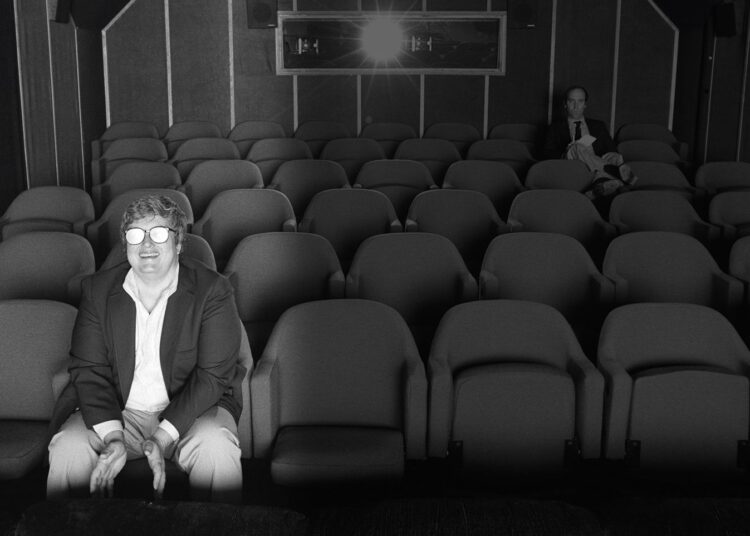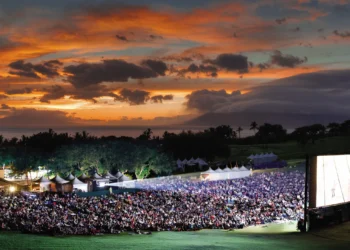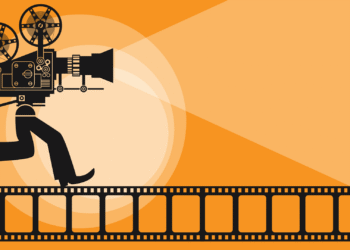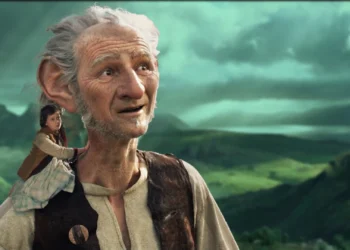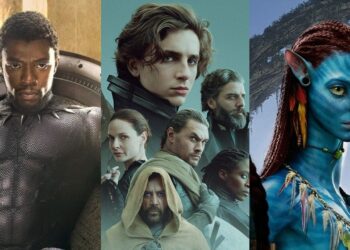Unpacking the Visual Magic: The Art of Cinematic Style
Dive into the captivating realm of cinematic style, where visual elements transcend mere storytelling and become a powerful form of artistic expression.
1. The Rise of Visual Style as a Key Criterion
Visual style is increasingly becoming a central factor in how films are evaluated, particularly in creative and competitive settings. This shift reflects a growing appreciation for the ways in which visual elements—such as framing, lighting, and color harmony—contribute to the overall artistic identity of a film. Rather than focusing solely on plot development or performance, evaluators now place significant value on the filmmaker’s ability to craft a compelling visual experience that enhances storytelling and leaves a lasting impression.
2. Symbolic Visuals in Independent Cinema
Within the realm of independent cinema, there is a notable trend toward using symbolic imagery to convey emotional and thematic depth. These visuals often function on a metaphorical level, enriching the narrative by offering additional layers of meaning. Directors are increasingly expected to employ visual cues—such as recurring motifs or intentional mise-en-scène—to express internal character states and abstract concepts. This emphasis positions visual language as a vital tool for storytelling, where meaning is derived not only from dialogue but also from deliberate aesthetic choices.
3. A New Focus for Film Critics
As the role of visual artistry gains prominence, film critics are adapting their methodologies to better capture the complexities of modern filmmaking. Traditional scoring systems are giving way to more interpretive and analytical approaches that highlight the innovation found in areas like cinematography, production design, and sound design. This evolution reflects a desire for criticism that acknowledges the full spectrum of creative effort behind a film, offering a more balanced and informed evaluation that values technical precision alongside narrative effectiveness.
4. Deepening the Study of Film Aesthetics
The heightened focus on visual storytelling has also influenced the academic and professional study of cinema. Institutions are placing greater emphasis on teaching the principles of visual composition, symbolic analysis, and audiovisual coordination. This enriched curriculum supports the development of more insightful critiques and a deeper understanding of how films function as visual art forms. By systematically exploring the aesthetic dimensions of film, both students and practitioners are better equipped to engage critically with the medium and recognize its full expressive potential.
Symbols and Hidden Meanings: Decoding Film’s Secret Language
Dive into how film critics are now dissecting the hidden symbols and meanings woven into the fabric of cinema.
1. The Shift in Film Criticism
Film criticism is undergoing a significant transformation, shifting away from superficial commentary and plot-based summaries toward a more analytical and interpretive mode of engagement. Critics are increasingly interested in decoding the symbolic and structural layers within films, aiming to reveal the intentional choices that shape a film’s emotional and ideological resonance. This evolution underscores a growing recognition of cinema as a complex art form that communicates through a sophisticated interplay of visual, auditory, and narrative elements.
2. Unpacking Visual and Symbolic Elements
Contemporary criticism places a heightened emphasis on the interpretive power of visual cues and symbolic devices. Elements such as color schemes, lighting contrasts, spatial arrangements, and recurring objects are no longer viewed as mere stylistic flourishes. Instead, they are understood as deliberate choices that contribute to the film’s thematic construction. Critics now delve into how these techniques convey subtext, shape mood, and offer commentary on broader societal or psychological issues, thus enhancing the viewer’s interpretive experience.
3.Reevaluating Classical Cinema Through Modern Lenses
A growing trend within film scholarship involves revisiting older films with a more critical and context-sensitive perspective. By applying modern analytical frameworks—such as feminist theory, postcolonial studies, or class critique—critics are uncovering layers of meaning that may have been overlooked or undervalued at the time of the film’s release. This practice not only enriches the historical understanding of cinema but also repositions classic works within ongoing cultural conversations, demonstrating their continued relevance and interpretive richness.
4. Hollywood’s Influence on Public Perception
An important area of critical inquiry focuses on the societal influence of mainstream cinema, particularly in how it frames sensitive or complex issues. The repetition of certain tropes and portrayals can significantly affect public understanding and reinforce stereotypes. Scholars argue that the entertainment industry bears a degree of responsibility in shaping public discourse, especially when dealing with topics such as mental health, race, or gender identity. Through critical examination, it becomes possible to challenge misleading narratives and advocate for more informed and ethical representations.
5. Broadening Critical Dimensions
The expanding focus of film criticism reflects a broader cultural shift toward media literacy and critical engagement. By encouraging viewers to interrogate the layers beneath a film’s surface—its aesthetic decisions, symbolic constructs, and ideological positions—critics help cultivate a more active and informed audience. This approach elevates the discourse around cinema, recognizing it as a powerful medium for cultural expression and societal reflection, capable of provoking thought, challenging norms, and fostering empathy through complex storytelling.
Critique as Craft: Engaging Minds Through Thoughtful Analysis
Dive into the world of film criticism, where thoughtful analysis unlocks deeper understanding and appreciation of cinematic art.
1. Deconstructing Style: The Building Blocks of Cinematic Language
Film criticism today demands a close reading of the visual and auditory elements that construct a film’s aesthetic identity. Rather than viewing style as secondary to content, critics now recognize stylistic components—such as mise-en-scène, cinematography, sound design, and editing—as central to how a film communicates meaning. The placement of actors, the use of lighting and shadow, the pacing of cuts, and the framing of shots all contribute to a film’s narrative rhythm and emotional tone. By deconstructing these stylistic choices, critics are able to uncover the filmmaker’s intent and the unspoken language through which cinema expresses mood, tension, and theme. This attention to formal detail reflects an understanding of film as a constructed text, where every aesthetic decision carries interpretive weight.
2. Narrative Unveiled: Plot, Character, and Theme
In addition to style, narrative remains a critical domain of film analysis. The unfolding of plot, the development of character arcs, and the articulation of thematic concerns are all key to understanding a film’s deeper resonance. Critics analyze how narrative structure functions—not simply as a sequence of events, but as a carefully arranged system that reveals underlying tensions, values, and ideologies. Character transformations, moral dilemmas, and symbolic journeys are dissected to expose the mechanisms by which films engage audiences emotionally and intellectually. By unpacking these narrative components, critics reveal how stories reflect and interrogate human experience, societal norms, and cultural myths, offering more than just entertainment but also philosophical or political commentary.
3. The Critic’s Toolkit: Formalism, Narratology, and Beyond
A sophisticated analysis of film relies on an array of theoretical frameworks, often collectively referred to as the critic’s toolkit. Formalism, for instance, directs attention to the film’s internal mechanics—how editing, framing, and visual motifs operate. Narratology examines the organization of events and the function of narrative devices. Other approaches, such as ideological criticism, consider how films reflect or subvert dominant social structures, while psychoanalysis and semiotics explore subconscious meanings, dream logic, and the function of visual symbols. These critical methods enable a layered reading of film, allowing critics to decode hidden meanings, challenge conventional interpretations, and connect cinematic texts to broader discourses in culture, philosophy, and psychology. Such a multidisciplinary toolkit underscores the seriousness with which film is now approached as an academic and cultural artifact.
4. From Subjectivity to Scrutiny: A Shift in American Film Criticism
In recent years, American film criticism has undergone a notable transformation, moving away from purely subjective reviews or personal impressions toward more structured, theory-driven interpretations. Critics are increasingly expected to justify their evaluations through detailed evidence, often grounded in visual analysis and theoretical application. This evolution signifies a broader cultural shift in how films are understood—not just as entertainment, but as complex works of art that demand intellectual engagement. The growing emphasis on formal scrutiny and symbolic interpretation has elevated the discourse surrounding cinema, fostering richer dialogue between critics, scholars, and audiences. As a result, film criticism is becoming a space not merely for opinion but for rigorous cultural investigation and aesthetic appreciation.
Q&A
Question 1: How has the evaluation of film at festivals like Sundance changed in recent years?
Answer: Film festivals are increasingly emphasizing visual style as a key judging criterion. Previously, narrative might have been the primary focus, but now cinematography, color palettes, and composition are explicitly recognized as crucial elements contributing to a film’s artistic merit. This reflects a broader shift towards appreciating the visual language of filmmaking.
Question 2: What specific visual elements are film critics now analyzing more closely in independent American films?
Answer: Critics are paying closer attention to symbolic visuals in independent cinema. This includes analyzing camera angles, color palettes, and object symbolism to understand how directors convey emotional depth and thematic meaning beyond the explicit narrative or dialogue. The focus is on decoding the underlying messages embedded within the visual choices.

